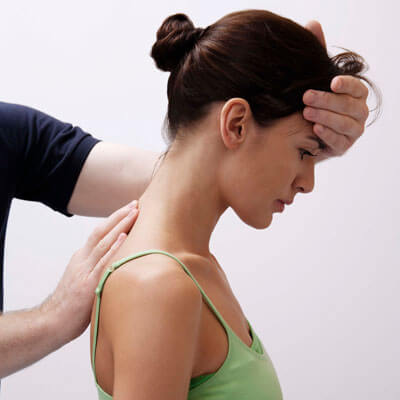Posture Tips
 Whilst chiropractors often talk about posture and exercise it is important to remember that we are all different. The ‘normal’ spine has three curves which form an S shape. The first curve from the base of the skull is the cervical spine (neck). This section of your spine is made up of seven small vertebrae and supports the head. The second curve of the spine is the thoracic spine which is made up of 12 slightly larger vertebrae from which the ribs attach this section of the spine curve away from the body. The third curve of the spine is the lumbar spine consisting of 5 large vertebrae and make up the main weight bearing section of the spine. It curves in towards the body.
Whilst chiropractors often talk about posture and exercise it is important to remember that we are all different. The ‘normal’ spine has three curves which form an S shape. The first curve from the base of the skull is the cervical spine (neck). This section of your spine is made up of seven small vertebrae and supports the head. The second curve of the spine is the thoracic spine which is made up of 12 slightly larger vertebrae from which the ribs attach this section of the spine curve away from the body. The third curve of the spine is the lumbar spine consisting of 5 large vertebrae and make up the main weight bearing section of the spine. It curves in towards the body.
A long history of poor posture, obesity, weakened supporting muscles or an atypically shaped spine can lead to abnormal weight bearing and increased stress on the spine and supporting muscles. Maintaining a healthy spine will help maintain the best spinal curves for your body as well as reduce unneeded spinal stress and ultimately pain.
The physical benefits are many, but there are other side benefits to good posture. When you stand properly, the body looks aligned, looks slimmer, and generally looks better. Good posture also helps you look and feel more confident.
The following posture tips are designed for you to use at work, home, school and in all areas of your life. They are useful at all times to maintain a healthy spine. If you are only using them when your back is painful then your body will not benefit nearly as much.
If you have any difficulty with any of the tips it is likely your body is already not working well enough. If this is the case then stop the posture tips and consult your chiropractor who will be able to adapt the techniques and help you on the road to recovery.
Here are some easy ways to check your posture at home:
Stand facing a full length mirror and check the following…
- Your shoulders are level
- Your head is straight
- The spaces between your arms and sides are equal on both sides.
- Your hips are level.
- Your ankles are straight.
You can also have someone look at you from the side and check the following…
- Your head is stacked directly over your body
- Your chin is parallel to the floor.
- Shoulders are in line with ears.
- Your hands are in line with hips.
- Your knees are straight.
- Your lower back is slightly curved forward.
Practice these points of posture every day, and before you know it, your posture will be perfect.
Standing Posture
To stand and walk correctly, begin by making sure your toes point forward, not out and not inward.
Next, lengthen the space between your navel and your collarbone by lifting your breastbone up toward the ceiling. This action lets your head naturally come back on top of your spine and gives you a natural curve in your lower back.
Keep your chin parallel with the floor, not tipped up.
Sitting Posture
Seat Angle
Seat angle affects the position of the pelvis which in turn influences the curvature of the lower spine. As the seat angle changes from a backward to a forward tilting slope the top of the pelvis rotates restoring the S shape of the spine. To achieve this when working at a desk the seat height must be set so that the hip is slightly higher than the knee.
Lumbar Support
The curvature of the spine alters during the day, as body weight creates pressure on the intervertebral discs. To combat strain and fatigue a well fitting lumbar support is required together with upholstery specific for your stature. Ideally chairs should have an adjustable lumbar support to maintain the posture and ensure a correct fit.
Rocking Action
A relaxed rocking motion is the best form of exercise whilst sitting. Your body needs movement to prevent muscular strain, assist blood flow and help concentration. The angle between the seat and back should remain constant so that the lower back is always supported throughout the rocking action.
Remember
Good posture is just one of the tools of a healthier life. Add it to exercise, nutrition, emotional honesty and a healthy nervous system to find balance in body, mind and spirit.
Get up and move. As muscles tire, slouching, slumping, and other poor postures become more likely; this in turn puts extra pressure on the neck and back. In order to maintain a relaxed yet supported posture, change positions frequently. One way is to take a break from sitting in an office chair every half hour to forty five minutes. Get up to stretch, stand and walk for two minutes. Use this time to get a glass of water (Recommended daily intake of water is 2.7 liters).
To learn more, schedule an appointment with our team today!
CONTACT US »

